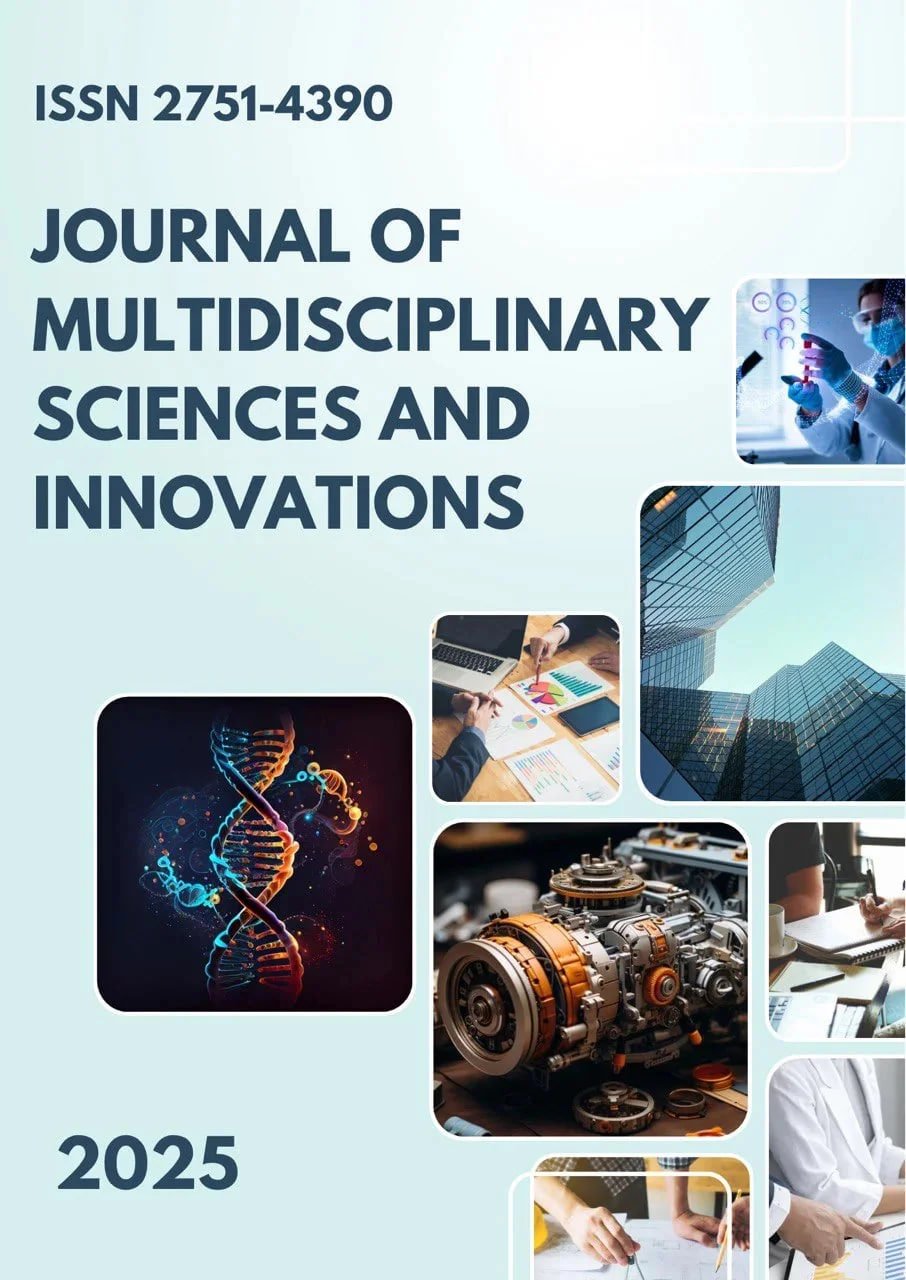DIE STRUKTUR UND FUNKTIONALE BEDEUTUNG DES MENSCHLICHEN HERZENS
Main Article Content
Abstract
This article provides a detailed description of the anatomical and functional structure of the human heart. It offers an in-depth analysis of the anatomical location, wall layers, chambers and valves, specific contraction characteristics of the heart muscle, the role in the circulatory system, coronary blood supply, and the nervous regulatory mechanisms of the heart. The effects of disturbances in heart structure on its functions and their pathological consequences are also analyzed. This article serves as a scientific and popular source for medical students and interested individuals.
Downloads
Article Details
Section

This work is licensed under a Creative Commons Attribution 4.0 International License.
Authors retain the copyright of their manuscripts, and all Open Access articles are disseminated under the terms of the Creative Commons Attribution License 4.0 (CC-BY), which licenses unrestricted use, distribution, and reproduction in any medium, provided that the original work is appropriately cited. The use of general descriptive names, trade names, trademarks, and so forth in this publication, even if not specifically identified, does not imply that these names are not protected by the relevant laws and regulations.
How to Cite
References
1.Sultonov S.A. et al. Anatomie des Menschen, Teil 1. Tashkent: "Ibn Sina", 2020.
2.Moore K.L., Dalley A.F., Agur A.M.R. Klinisch orientierte Anatomie. 7. Auflage. Wolters Kluwer, 2013.
3.Gray H. Grays Anatomie: Die anatomische Grundlage der klinischen Praxis. 41. Auflage. Elsevier, 2015.
4.Tortora G.J., Derrickson B. Prinzipien der Anatomie und Physiologie. 15. Auflage. Wiley, 2017.
5.Kumar V., Abbas A.K., Aster J.C. Robbins und Cotran Pathologischer Basis der Krankheit. 10. Auflage. Elsevier, 2017.
6.Hall J.E., Guyton A.C. Lehrbuch der medizinischen Physiologie. 13. Auflage. Elsevier, 2016.
7.Libby P., Bonow R.O., Mann D.L., Zipes D.P. Braunwalds Herzkrankheit: Ein Lehrbuch der kardiovaskulären Medizin. 11. Auflage. Elsevier, 2018.
8.Fuster V., Ryden L.E., Cannom D.S. et al. ACC/AHA/ESC 2006 Richtlinien für das Management von Patienten mit Vorhofflimmern. Journal of the American College of Cardiology, 2006.
9.Zipes D.P., Camm A.J., Borggrefe M. et al. 2015 ACC/AHA/HRS Richtlinie für das Management von Patienten mit ventrikulären Arrhythmien und der Prävention des plötzlichen Herztodes. Circulation, 2015.
10.Maron B.J., Gardin J.M., Flack J.M. et al. Prävalenz und klinische Bedeutung der linksventrikulären Hypertrophie bei Wettkampfsportlern. New England Journal of Medicine, 1996.
11.Kahn J.A. et al. Die Rolle des Herzens bei der Regulation des Blutdrucks. Journal of Hypertension, 2018.
12.Burchfield J.S. et al. Pathologische ventrikuläre Remodellierung: Eine Perspektive auf Herzinsuffizienz. Journal of the American College of Cardiology, 2013.
13.Hurst J.W. Das Herz: Arterien und Venen. Circulation, 2000.
14.Packer M. et al. Die Rolle der neurohormonalen Aktivierung bei Herzinsuffizienz. Journal of the American College of Cardiology, 2017.
15.McMurray J.J.V. et al. Herzinsuffizienz: Ein umfassender Leitfaden. European Heart Journal, 2019.

